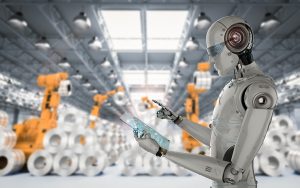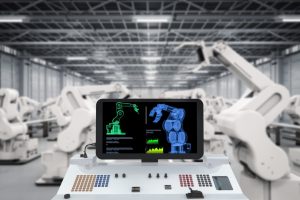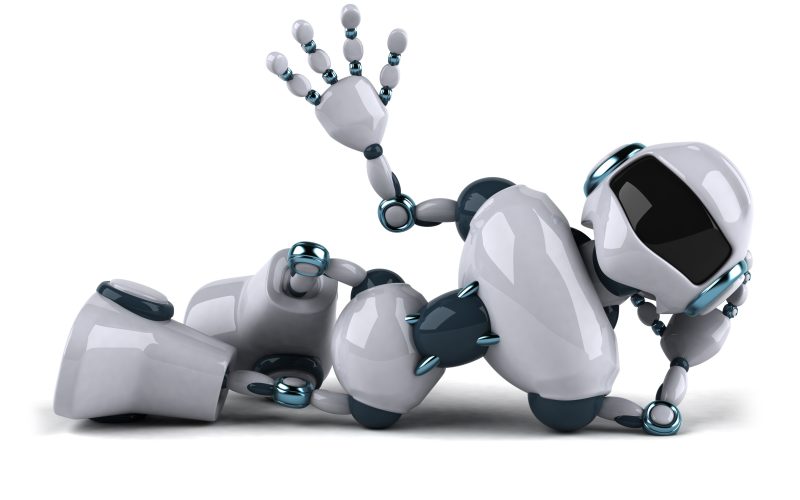Understanding Robotic Automation Trends
Automation has become a buzzword in today’s business landscape, particularly as industries increasingly adopt robotics to optimize operations. For small business owners, entrepreneurs, IT professionals, and technology enthusiasts, robotic automation holds immense potential. It’s no longer just a distant concept for large manufacturing facilities—robotic automation is making its way into offices, workshops, and startups. But what exactly is robotic automation, and how can small businesses leverage it to stay competitive?
This blog dives deep into the world of robotic automation, exploring current trends, benefits for small businesses, real-world examples, and challenges to consider. By the end, you’ll have a clear picture of its applications and how to begin adopting automation to transform your business.
What is Robotic Automation?

At its core, robotic automation refers to the use of robotics to perform repetitive or complex tasks that were previously done manually. These tasks can range from assembling products to processing data. Leveraging robotics allows businesses to operate more efficiently and focus human talent on higher-value work.
Robotic automation spans several forms, including:
- Physical Robots: Machines that handle physical tasks such as assembly, packaging, or delivery (e.g., robotic arms in factories).
- Robotic Process Automation (RPA): Software “bots” that automate repetitive, rule-based processes like invoice generation, data entry, and responding to customer support queries.
The integration of robotics in both physical and digital workflows is driving innovation across industries including manufacturing, retail, healthcare, logistics, and even small-scale startups.
Current Trends in Robotic Automation
The world of robotics is evolving rapidly, and several noteworthy trends are reshaping how businesses operate. Here’s a closer look:
1. Collaborative Robots (Cobots)
Unlike traditional industrial robots limited to specific areas, collaborative robots, or “cobots,” are designed to work safely alongside human workers. Cobots excel in tasks that combine human judgment with robotic precision, such as quality control or inventory handling in warehouses. They are accessible, versatile, and an affordable option for small businesses.
2. AI-Driven Automation
Artificial Intelligence (AI) is propelling robotic automation to new heights. Robots are now capable of learning, adapting, and reacting to changing environments in real-time. For example, AI-powered robots in supply chain logistics optimize routes and predict inventory shrinkage, minimizing waste and boosting productivity.
3. Robotics-as-a-Service (RaaS)
For smaller businesses concerned about upfront costs, Robotics-as-a-Service has emerged as a game-changer. Much like subscription models in software, businesses can “lease” robotic solutions to access critical functionality without the burden of hardware ownership. Providers like Fictiv and Bright Machines offer RaaS models tailored to specific needs.
4. Mobile Robots and Drones
Autonomous mobile robots (AMRs) and drones are increasingly being seen in retail, agriculture, and warehousing. From fulfilling touchless deliveries to monitoring crop health, these mobile devices are adding value across industries.
5. Increased Focus on Workforce Collaboration
Robotic solutions are increasingly focusing on enhancing—not replacing—the human workforce. By automating routine tasks, robots allow employees to focus on roles requiring creativity, emotional intelligence, and strategic thinking.
Benefits of Robotic Automation for Small Businesses

Robotic automation isn’t just for industry giants; small businesses, too, stand to gain significantly by implementing these systems. Here are some of the main advantages:
1. Enhanced Efficiency
Automation accelerates repetitive tasks, which increases overall productivity. For example, a bakery using robotic automation can streamline packaging, enabling employees to focus more on customer service and custom drafting recipes.
2. Cost Reductions
Although the initial costs can seem steep, robotic systems save businesses money in the long run by reducing errors, lowering labor costs for repetitive tasks, and minimizing waste. Over time, the cost savings can outweigh the investment.
3. Consistency & Quality
Robots are incredibly precise, which results in consistent outcomes and higher-quality production. For instance, small-scale manufacturers can use automated systems to meet high production standards, even for small batches.
4. Improved Safety
Having robots handle hazardous tasks—such as lifting heavy objects or working with chemicals—can create a safer work environment. This reduces workplace injuries and promotes employee well-being.
5. Scalability
Robotic automation tools grow alongside your business. Whether you start with a lean setup or scale to 24/7 production, robotics can meet increasing demands without sacrificing efficiency.
Challenges and Considerations

While robotic automation offers undeniable benefits, businesses must also face certain challenges before implementation:
1. Initial Costs
Purchasing and integrating robotics into workflows can involve significant upfront investment. However, solutions like RaaS are making automation more accessible, especially to small businesses.
2. Employee Training
Successfully implementing robotics requires investments in employee training. Staff need to learn how to operate, maintain, and work alongside automated systems. Developing training programs or partnering with subject-matter experts can bridge this gap.
3. Integration Challenges
Existing workflows and systems might not immediately sync with robotic automation, necessitating adjustments or upgrades to infrastructure and processes.
4. Resistance to Change
Your employees may feel uncertain about automation initiatives, worrying about job security. Transparent communication and emphasizing “collaboration over replacement” can help mitigate resistance.
Real-world Examples of Robotic Automation in Action
Small businesses across industries are already successfully leveraging robotic automation. Here are two examples:
Case Study 1: Local Coffee Roaster
A small, family-run coffee roastery implemented robotic systems to automate packaging and labeling. This change cut their process time in half and allowed employees to deepen customer relationships and focus on expanding their operations.
Case Study 2: Digital Marketing Agency
A small marketing agency used Robotic Process Automation (RPA) to automate repetitive tasks like generating reports on web traffic and email campaign performance. The time saved allowed employees to focus more on creative tasks, helping the agency grow its pipeline of clients.
The Future of Robotic Automation

What lies ahead for robotic automation? Here are some projections:
- Greater Personalization: Robots will become even more adaptive, capable of catering to both small and highly personalized production needs.
- Integration Across All Business Sizes: Decreasing costs and tools like RaaS will continue lowering entry barriers for small businesses.
- Advancements in AI: Coupled with robotics, artificial intelligence will drive smarter workflows and predictive decision-making.
- Human-Robot Symphony: The emphasis will increasingly shift towards optimized collaboration between humans and robots, enhancing creativity and output.
Explore Robotic Automation for Your Business Today
Robotic automation is no longer the sole domain of industry giants. From automating routine tasks to enhancing production quality and safety, automation offers enormous potential to businesses of all sizes. By staying informed about trends, benefits, and hurdles—and by taking small, manageable steps—you can seamlessly integrate robotics into your operations and achieve lasting success.
Are you ready to explore robotic automation for your business? Start small, dream big, and see how these technological marvels can transform your operations.










